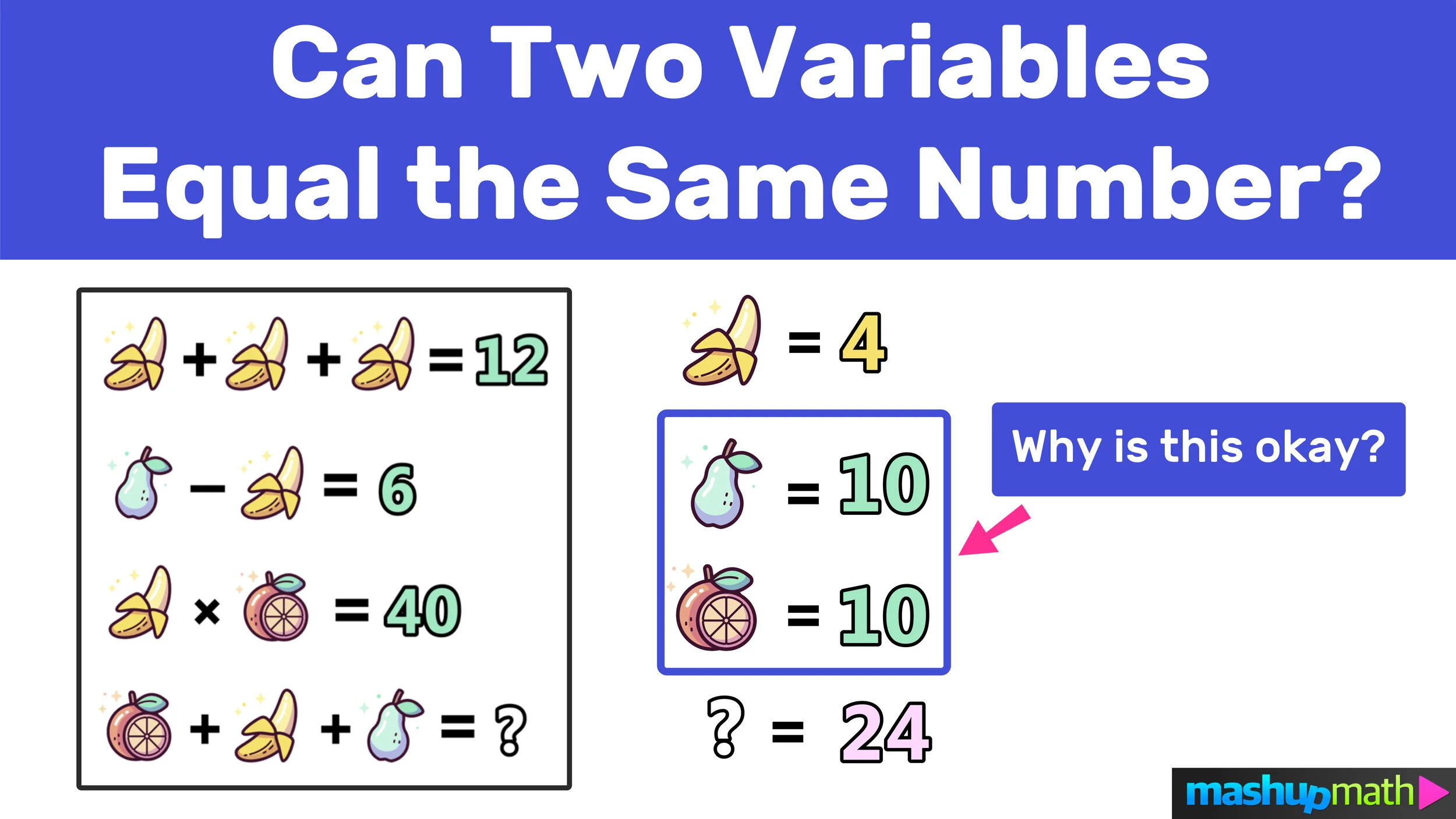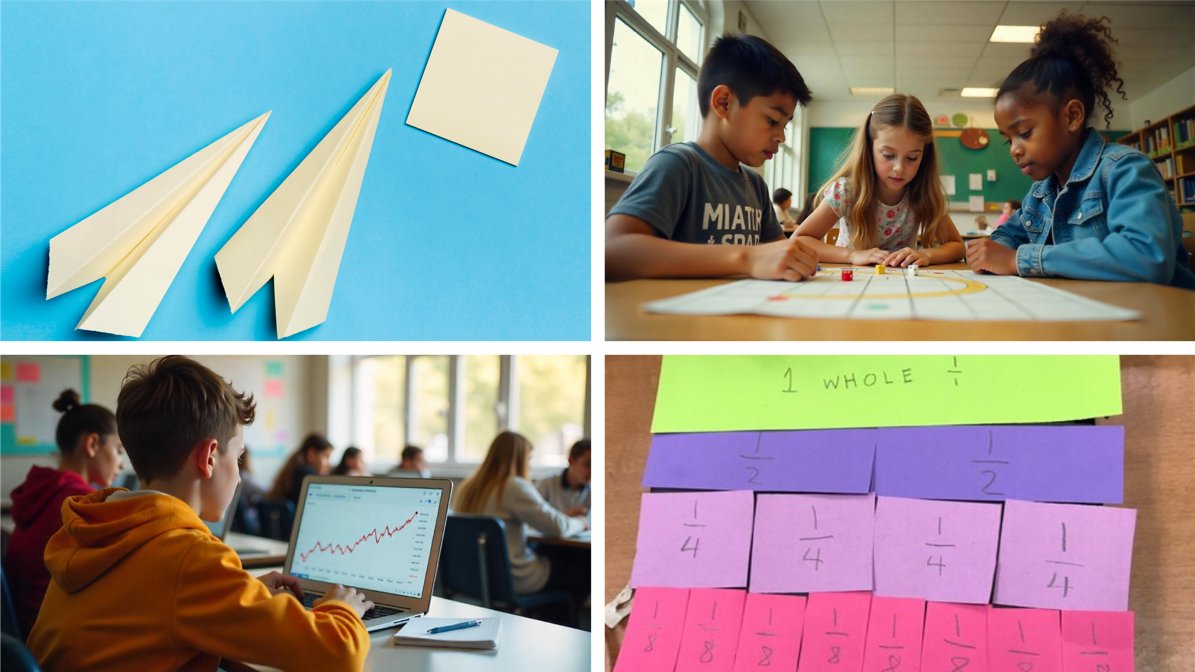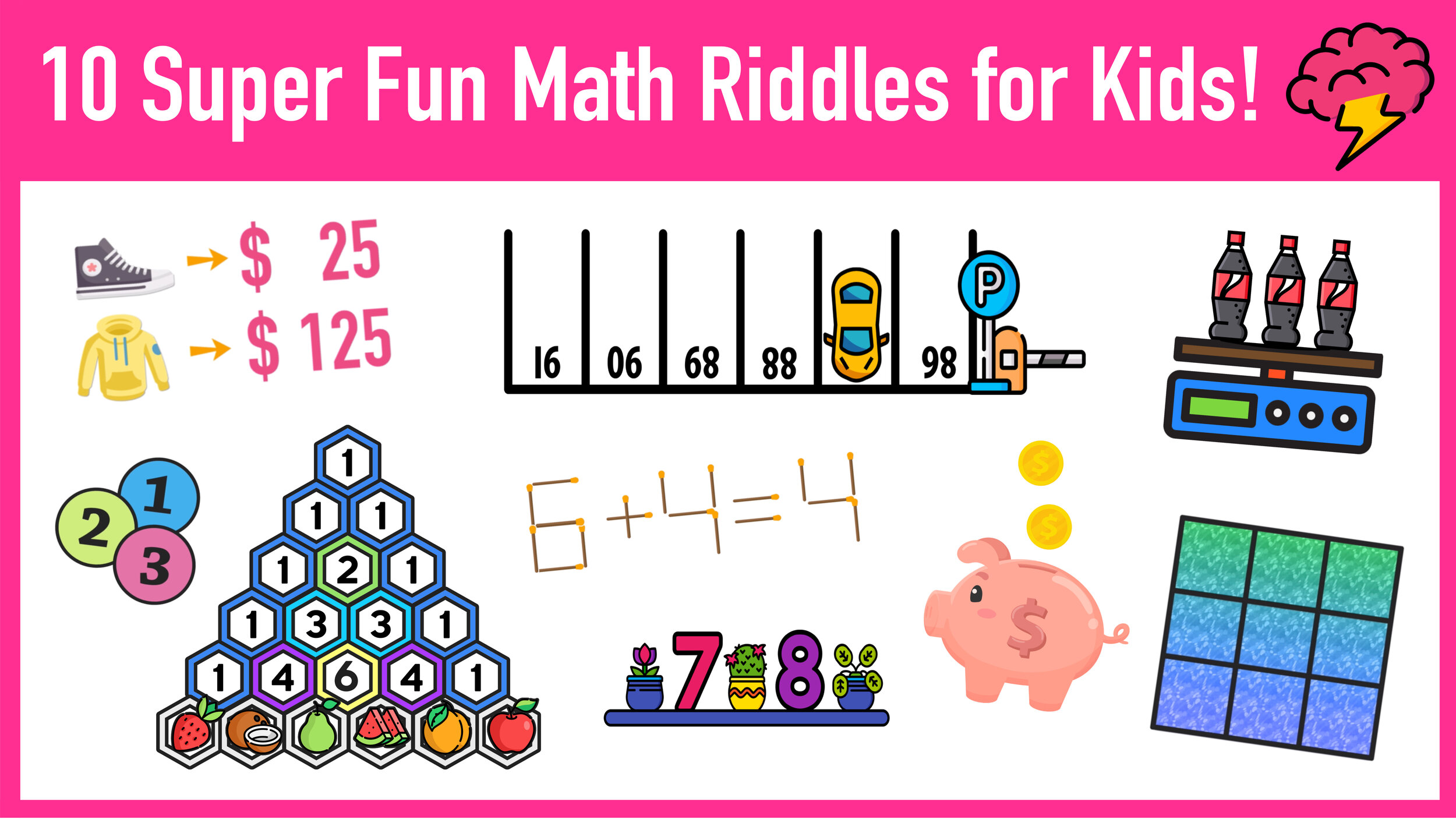Can Multiple Variables Equal the Same Number in Algebra?
In today’s post, we will explore why two or more variables can absolutely represent the same value (and why understanding why this is true is critical for being successful in algebra).
Let’s start with a very important definition: In algebra, a variable is a symbol that represents an unknown value.
And while the most common variables in algebra are the letters X and Y, the information shared in this post applies to any letters or symbols that are used as variables (such as image icons used to represent variables/values in algebra puzzles).
Now it’s time to determine whether or not two different variables can have the same value (i.e. equal the same number).
This question pops up every now and then in response to algebra puzzles where typically letter variables are replaced with icons or symbols, such as the Bananas, Pears, and Oranges puzzle shown below, where students have to find the value of each symbol and the value of the ? in order to solve the puzzle.
While these puzzles require algebraic thinking to solve, they are appropriate to share with any grade level.
In fact, working on these kinds of problems exposes students to algebraic thinking years before they ever enter an algebra class!
However, since young students are not familiar with most algebra concepts, they often believe that multiple symbols can not have the same value.
But is this assumption actually true?
In the puzzle shown above, it is clear that the value of each banana is 4 (since 4+4+4=12). Now you can substitute each banana for 4 and move onto the second line, where you can conclude that the value of the pear is 10 (since 10-4=6). To find the value of the orange, you must ask 4 times what value is equal to 40? And you would conclude that the value of the orange equals 10.
So, you can conclude that the banana=4, pear=10, orange=10, and ?=24.
This is the point where pre-algebra teachers and parents sometimes become concerned when they see that two variables equal the same number (the pear and the orange both equaling 10). Many conclude that these two variables being equal violates an algebraic law and fear that exposing students to this type of fallacy at a young age will damage their chances of being successful in algebra later on in life.
But, the idea that multiple variables can not equal the same value in algebra is simply not true. In fact, it is extremely common in algebra and something that every algebra student will come across when dealing with graphing equations, solving systems of equations, and performing substitution.
With this algebraic truth in mind, let’s take a quick look at the simplest reason why two variables can have the same value, namely X and Y.
Again, remember that there is absolutely no algebraic rule that states that two or more variables can not equal the same number.
Consider the graph below that represents the equation y=6-x
Graph via www.desmos.com/calculator
Each point that the graph passes through represents an (X,Y) coordinate that would make the equation true.
For example, the point (0,6) is a solution to the equation because when you substitute X=0 and Y=6 into y=6-x, you get 6=6-0 Each point that the graph passes through represents an (X,Y) coordinate that would make the equation true.
For example, the point (0,6) is a solution to the equation because when you substitute X=0 and Y=6 into y=6-x, you get 6=6-0 ➝ 6=6
You will also notice that the point (3,3) is also on the graph, where X=3 and Y=3 (both variables have the same value). When you when you substitute X=3 and Y=4 into y=6-x, you get 3=6-3 ➝ 3=3.
Conclusion
In conclusion, the idea that two or more variables can not equal the same value in algebra is simply incorrect. In fact, it is extremely common in algebra for multiple values to equal the same value and understanding this fact is crucial for performing key algebra tasks including graphing, solving systems of equations, and performing algebraic substitution.
By exposing young students to these kinds of problems and concepts at a young age, you are better preparing them to succeed in algebra, which is considered to be the gateway to higher-level math courses that are a precursor to several in-demand careers.
Puzzle Reference: Click to Enlarge
Share your thoughts, questions, and suggestions in the comments section below!
(Never miss a Mashup Math blog--click here to get our weekly newsletter!)
By Anthony Persico
Anthony is the content crafter and head educator for YouTube's MashUp Math and an advisor to Amazon Education's 'With Math I Can' Campaign. You can often find me happily developing animated math lessons to share on my YouTube channel . Or spending way too much time at the gym or playing on my phone.

















